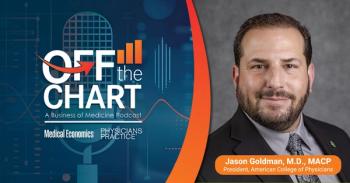
Improving return on your medical office investment
Physician medical office investment: optimize your office’s size, layout, and location to increase patient capacity, slash inefficiencies, and skyrocket practice profitability.
Most physicians have one critically important asset in their investment portfolio that significantly impacts the amount of income they earn every year. They "invest" in this asset with a check monthly for as long as they continue to practice medicine yet it is one of the least understood assets in the physician's portfolio. What is it?
The answer, of course, is your
Let us take a simple example: your office could use
This is just one example of how your office space affect your income. All too often, physicians will focus too much attention on the additional cost to rent or purchase when these factors are not nearly as important considerations in choosing your office. In the example above, let's assume this space was chosen because the annual rent was $44,000 per year and a larger space cost $54,000 per year. Selecting the smaller office and not fully utilizing resources hasn’t saved $10,000 per year – it has cost you $215,000 ($225,000 - $10,000). The losses become even more staggering when you factor in lost income and increased costs due to an inefficiently designed office where you need more employees to produce the work.
Here are some simple rules to follow in order to maximize the value of your office investment.
- Treat your office like an income producing investment. Your office is a production facility, period. You get paid only for the amount of work you and your staff produce. Maximize your ability to produce income by adding extenders, enlarging your office, renovating your office to streamline operations, add services and procedures and eliminate or share with other physicians your non-income producing spaces.
- Your office is a "practice" investment and its sole purpose is to allow you to maximize your income. Do not consider your office a real estate investment. If it inhibits your ability to grow and/or add services, move, sell it or lease it to someone else.
- Do not become emotionally attached to your office. Too many physicians stay in an office because they like their location, the surroundings, proximity to services, their consultation office or due to familiarity. The moment you realize that you are losing opportunity to maximize your income due to your office size and/or location, make a change. This might involve a renovation, addition, or a move to a completely new location that will better support your practice.
- Recognize that the true value of your office lies in its ability to produce NET INCOME. An efficiently designed office will produce the highest possible return after expenses.Do not equate the lowest possible rent or mortgage payment with the resulting net income. In the example above, a lower rent actually "cost" the physician over $215,000.
- Enhance the value of your practice and your return on your monthly investment by selecting an office that is efficiently designed with identical exam rooms, has easy vehicular and pedestrian access, is visible with excellent signage, is clean, provides patient privacy, provides opportunity for growth, and does not limit the services which you can provide to your patients.
You can determine whether you are losing income due to your office layout and/or its location by answering these questions:
- Are there technologies or services you would provide if you had the space?
- Could you add a partner or extenders if you had more space?
- Could you share non income producing areas with others?
- Do you require additional personnel due to the layout of the office?
- Are you paying overtime frequently?
- Is patient scheduling impacted by your office location and/or accessibility?
- Do your exam rooms differ in size and layout?
- Does your office have bottlenecks in the movement of patients, supplies or staff?
- Are certain services prohibited due to your location, (i.e., hospital campus)?
A “yes” answer to any of these questions indicates you may be losing income opportunities. In many cases, you can construct a simple cost/benefit analysis to determine the impact of possible office changes to your income. For a more in-depth analysis, you may be better served by hiring an expert to assist you in evaluating your options.
In summary, your office represents a significant "practice" investment. It is a tool that you use to complete your production cycle. By recognizing this fact, you are better able to evaluate and plan for the future growth of your practice and the services and procedures you will employ to enhance the return on your monthly investment. Oftentimes we read about corporations that abandon huge manufacturing plants worth hundreds of millions of dollars and are amazed at the perceived waste. However, these firms have determined that the sunk cost of remaining in a particular location was overshadowed by the opportunities to maximize their return on investment elsewhere. In today's healthcare marketplace of declining reimbursement and competition, you too should critically evaluate opportunities to maximize the return on your office investment dollar.
Frank Ricci has over 30 years experience in real estate development, brokerage, facility design, and construction management of medical office buildings, surgery centers, diagnostic centers and other healthcare facilities.
Newsletter
Optimize your practice with the Physicians Practice newsletter, offering management pearls, leadership tips, and business strategies tailored for practice administrators and physicians of any specialty.











